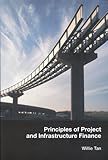| Title: | Principles of Project and Infrastructure Finance |
| Categories: | Construction |
| Authors: | Willie Tan |
| ISBN-10(13): | 0415415772 |
| Publisher: | Routledge |
| Publication date: | 2007-05-09 |
| Edition: | New Ed |
| Number of pages: | 296 |
| Language: | English |
| Picture: |

|
| Review: |
In this addition to the library of books concerning project funding, this text sets itself the aim of providing guidance to academics and practitioners in the form of financial principles and equations. Unlike most of the other project financing texts this book does not commence with a general overview of the theories, tools and techniques with which the subject abounds, rather it builds up an approach based on the elements of engineering economics, cash flows and the other key relationships. This book has a simple structure with concise clear chapters of between 10 and 15 pages in length starting with an explanation of discounting in chapter 2, moving into corporate finance in chapters 4 and 5 and hence to project finance in chapter 8. Interspersed amongst these chapters are chapters of a slightly more discursive nature including issues of development, social-cost benefit, risk and contracts. The final four chapters are devoted to case studies of projects with differing cash flow profiles. The book is very heavily focussed on mathematical relationships and not with the bigger, more complex picture. The advantage of this approach is that a number of relatively straight forward examples can be given to illustrate each point and this is reinforced with a set of questions at the end of each chapter. It is not a book which is likely to be picked up and read from avidly cover to cover, but more in the style of a reference text it contains discrete sections which can be consulted for detailed advice and guidance as required. The most helpful section of the book is contained towards the end of the text in the case studies. The chapters report the funding arrangements for a power project, an airport, an office development and a chemical storage project. Whilst there is much to appreciate in these studies, the lack of detail for example of the risk management in the Shanghai Chemical Storage project is rather frustrating for practitioners seeking guidance. Overall I think the book is a valuable addition to the library and is very clear at explaining financial relationships in terms of mathematical equations but is more likely to be a useful reference or secondary reading book. Professor N J Smith May 2008 |



